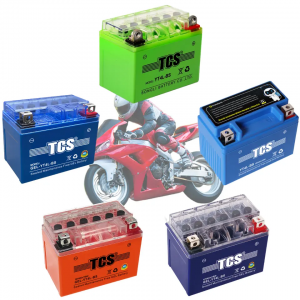As the motorcycle industry evolves, so too does the technology behind motorcycle batteries. With advancements in electric vehicles (EVs) and an increasing focus on sustainability, the future of motorcycle batteries, particularly lead-acid batteries, is set to change significantly. This article explores key trends that will shape the market for motorcycle batteries in the coming years.
1. Growing Demand for Electric Motorcycles
The shift towards electric mobility is a primary driver of change in the motorcycle battery market. With increasing environmental awareness and government incentives for EV adoption, more consumers are considering electric motorcycles. As a result, the demand for advanced battery technologies, including lithium-ion and improved lead-acid batteries, is on the rise. While lead-acid batteries have traditionally been popular, innovations are needed to enhance their performance and longevity in electric models.
2. Technological Innovations in Lead-Acid Batteries
Despite the growth of lithium-ion batteries, lead-acid batteries remain a popular choice due to their affordability and reliability. Manufacturers are investing in research and development to enhance lead-acid battery technology. Innovations such as absorbed glass mat (AGM) and gel cell batteries are improving the efficiency and lifespan of lead-acid batteries. These advancements make them a viable option for both conventional and electric motorcycles.
3. Increased Focus on Sustainability
Sustainability is becoming a crucial factor in battery production and disposal. Consumers and manufacturers alike are prioritizing eco-friendly practices. The recycling of lead-acid batteries is already established, with a significant percentage being recycled. In the future, we can expect increased regulations promoting sustainable practices in battery production, leading to a more circular economy in the motorcycle industry.
4. Market Competition and Pricing Pressure
As the demand for motorcycle batteries grows, competition in the market is intensifying. New entrants are emerging, offering innovative battery solutions at competitive prices. This competitive landscape could lead to price reductions, benefiting consumers. However, established manufacturers will need to focus on quality and reliability to maintain their market share.
5. Consumer Education and Awareness
As the market evolves, educating consumers about different battery options is essential. Many motorcycle owners may not be aware of the benefits of newer battery technologies. Manufacturers and retailers must invest in informative campaigns to highlight the advantages of lead-acid batteries alongside emerging alternatives, ensuring that customers make informed decisions.
Conclusion
The future of motorcycle batteries is poised for significant transformation. With the rise of electric motorcycles, technological innovations, and a greater focus on sustainability, the lead-acid battery market will continue to adapt. By staying informed about these trends, manufacturers and consumers can navigate the evolving landscape and harness the benefits of advancements in battery technology.
Post time: Oct-31-2024


